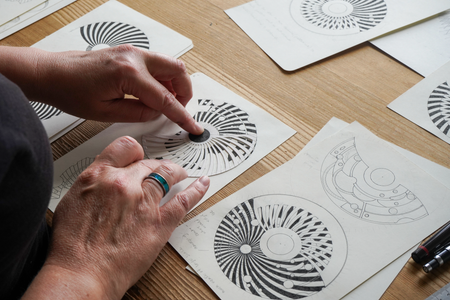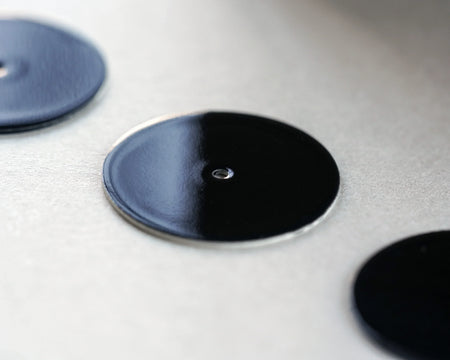Regional Variations in Enamel
Aug 23, 2018

We recently visited EPHJ in Geneva, the annual trade-only event where the watchmaking's high-end suppliers meet. It’s a fantastic opportunity to find suppliers and see who's making what, as well as catching up with friends in the industry. We were fortunate enough to meet with some Swiss enamellers, supplying many well known brands, and it was fascinating to discuss techniques and compare results.
What was striking was how our enamelling techniques had evolved with slight differences to the Swiss, which again are quite different to the Japanese methods.
The Swiss method

The method of producing enamel dials in some volume - as opposed to one-off pieces - was originally used in pocket watches and wasn't specific to Switzerland, but today there are so few people making them that I believe all are within Switzerland.
The enamel is applied to the copper dial and then fired, after which a powerful lapidary wheel is used to grind it down to a perfectly flat surface. The enamel becomes matte under sanding and is then placed back in the kiln and fired again to make it glossy. This final firing is referred to as a 'sparkle fire’. The end result is an incredibly flat, uniform finish which isn’t achievable by hand. Marketing videos of modern enamel dial manufacture tend to leave out the machine lapping, but it is critical part of this process.
The Japanese method
Grand Seiko produce some fantastic watches, and many of them use vitreous enamel dials. While ostensibly similar to Swiss-made enamel dials, the Japanese have embraced modern technology and apply enamel in liquid form which has many advantages, perhaps most noticeable is the ability to create a two level dial with a beautifully smooth curve rather than affixing two separate pieces together.
Our method

Over the last three years of development our focus has been the rendering of colour which enamelling enables, and the depth of that colour. Whilst we use the same ingredients as the Swiss and Japanese, the results are different.
Our work uses a series of repeated actions - powdering enamel on the dial, firing, sanding by hand, and repeating; in all between 6 and 8 times. We don't use lapidary wheels because they take off too much enamel each time. Instead we use diamond paper and sand by hand, allowing us to build up many layers. The advantage of building up layers is that the depth of colour is far greater. But it's a trade-off, it's the most laborious method and it isn't as machine-flat as those made in Switzerland, but to us it brings out what we love about the medium.


